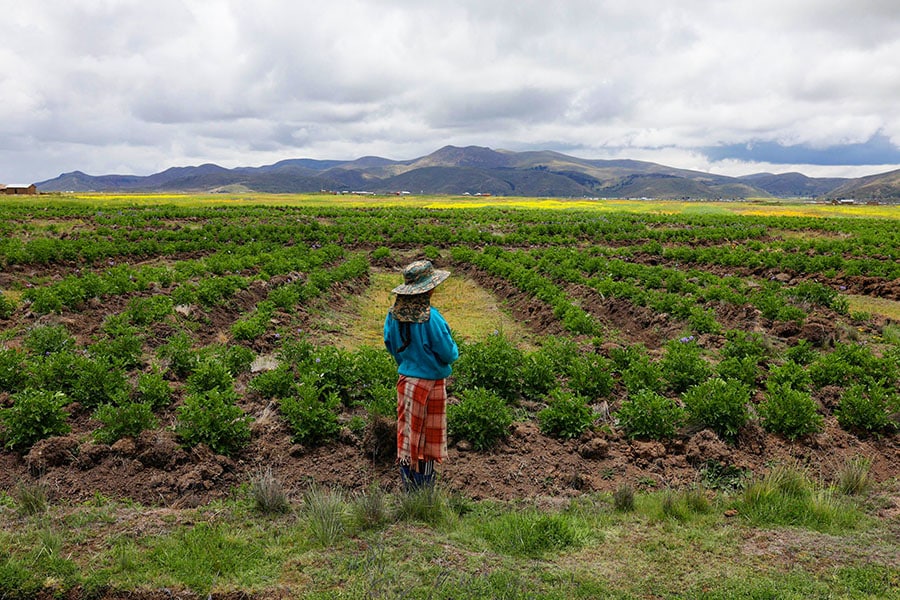
Andean farmers use age-old technique amid climate change
On the border of Peru and Bolivia, the Waru Waru—an indigenous Quechua word that means ridge—are once again protecting potato and quinoa crops as they did in the region 2,000 years ago
 A peasant from the Caritamaya community stands at the edge of a Waru Waru, an ancient agricultural technique, at a field in the Acora district in Puno, Peru. Image: Juan Carlos Cisneros / AFP©
A peasant from the Caritamaya community stands at the edge of a Waru Waru, an ancient agricultural technique, at a field in the Acora district in Puno, Peru. Image: Juan Carlos Cisneros / AFP©
From the sky, they look like huge, circular patterns made by aliens—but in fact, they are an age-old technique farmers have brought back to fight the climate crisis on the Andean plateaus of Puno.
On the border of Peru and Bolivia, the Waru Waru—an indigenous Quechua word that means ridge—are once again protecting potato and quinoa crops as they did in the region 2,000 years ago.
"It is an agricultural system that lets us face climate change, which has changed the seasons of the year. It is very beneficial in times of drought and frost," farmer Cesar Cutipa, 42, told AFP.
Puno lies on Lake Titicaca about 3,812 meters (12,507 feet) above sea level. Farmers have made six Waru Waru nearby in flood-prone fields.
Furrows form a rectangular platform, where planting is done. Surrounded by water, the planting beds are up to 100 meters long, between four and 10 meters wide and one meter high.







